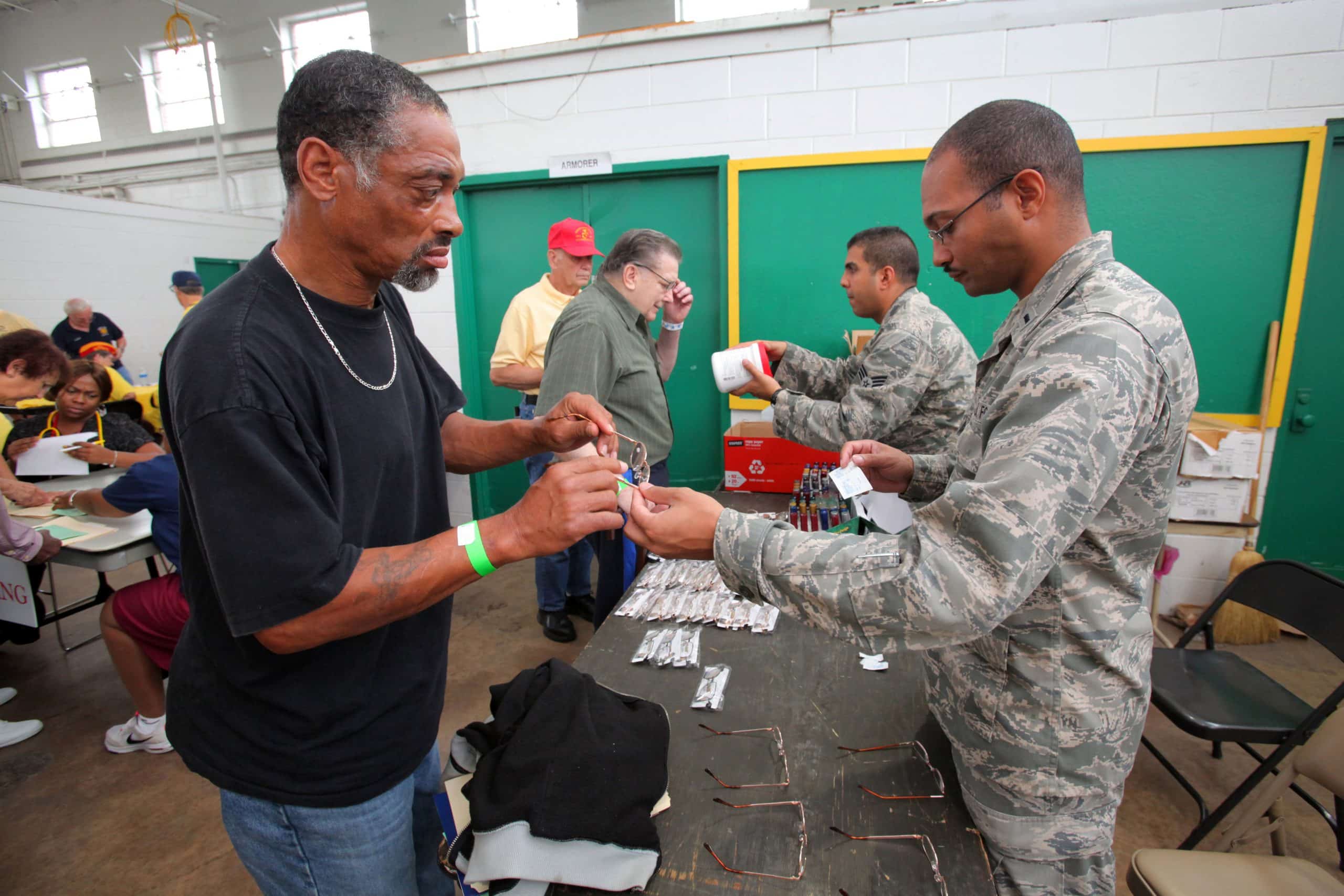
Rainbow House. Illustration by Eric Von Ploennies via flickr, CC BY-NC-ND 2.0
High housing costs and long hours at a minimum wage job came down hard on Claudia.
She tried to make it work, to keep her family of four children sheltered and cared for in a room behind her father’s repair shop in the San Fernando Valley, a vast suburb of Los Angeles. Her mother and brother also lived in the ad-hoc space, which was not zoned for residential living.
Long hours at a $10 an hour job, plus classes to earn her high school diploma meant she was away from home from 8 a.m. to 11 p.m. The absence affected her children, she said, and had a ripple effect on her.
“I was dealing with and trying to do multiple things,” said Claudia, 40, who did not wish to her give her real name. “And at that time, I was using.”
Someone in the neighborhood reported her and her family to authorities and a welfare check was conducted. Claudia tested positive for drugs. The Los Angeles County Department of Children and Family Services (DCFS) decided to remove her children and place them in foster care.
Claudia completed court-mandated substance abuse programs, but without adequate shelter, the judge couldn’t allow her to immediately reunite with her children. High rental costs remained a stubborn barrier.
Los Angeles, like many other cities across the country, has seen both rent costs and homelessness skyrocket in recent years. The increased risk of family separation is a lesser-known consequence of an affordable housing crisis that has spiraled out of control for hundreds of families across Los Angeles County who are otherwise eligible to reunite with their children.
Claudia’s situation is increasingly seen in cities nationwide, experts say, especially where rental costs continue to soar and the supply of affordable housing is limited. About 10 percent of children are removed from their homes because of housing issues, according to the most recent federal data. And the tight housing market may be making things more difficult.
But advocates and officials are hopeful about the prospects of a new county program aimed at removing housing as a child welfare barrier. The initiative, launched last year, is showing promising results—and possibly saving the county millions of dollars in the long run—though vulnerable families still face daunting challenges from a housing market that shows no signs of slowing.
Keeping Up With Soaring Rents
Los Angeles County needs more than 565,000 new affordable housing units for low-income renters, according to officials from the Los Angeles Homeless Service Authority (LAHSA), a city-county partnership. The agency estimates that since 2000, rents across the county have increased by 32 percent while median renter household income has decreased by 3 percent.
California is also the state with the second highest number of homeless families with children, according to a recent report to Congress on homelessness.
Local county officials took note. In 2016, the Los Angeles County Board of Supervisors approved $3 million in funding for the Family Reunification Housing Program, which is aimed at helping families reunify with housing support. The effort is part of the Los Angeles County Homeless Initiative, which is now funded in part by a billion-dollar outlay supported by voter-approved sales tax increase.
The program is a partnership between DCFS and LAHSA, with the close involvement of several other county agencies. DCFS contributed $2 million for the program, using funds that would otherwise be spent on children in out-of-home placements.
LAHSA provides Department of Housing and Urban Development (HUD) vouchers to parents, including both housing choice and Family Unification Program vouchers. To be eligible, children must already be living in out-of-home care, parents must be complying with relevant court orders, homelessness must be the only barrier to reunification, and families must be candidates for rapid re-housing as opposed to other types long-term housing assistance.
Clients take part in the search for their own apartments and receive case coordination help. Once a lease is secure, the program helps subsidize the rent.
“We’ve had some rare instances where the client can find a unit in 30 to 60 days, but in reality, it takes 90 days or more,” said V. Gail Winston, who heads the homeless services section at the DCFS. “We don’t want them to accept the first unit they see. We want the client to be able to find the unit that they can be able to maintain to rent when we are no longer subsidizing it. It takes a long time.”
The subsidized support ends after a year, at which time the family assumes full control of the rental. The hope is that families are able to obtain jobs that pay enough to cover those costs—a daunting task in Los Angeles. On average, rents in the county run $1,360 for a one-bedroom apartment and $1,750 for a two-bedroom, according to reports on the rental website Apartment List.
The program officially launched on Jan. 1, 2017. By July of this year, 87 families and 188 children had been housed, according to Winston. She said the county estimates that the reunification housing program has already saved $2.5 million by helping prevent the cost of out-of-home foster care in these cases. According to Winston, the money saved by the county will be put back in the program.
More Vouchers Needed
The efforts made by DCFS in Los Angeles County are to be commended, said Ruth White, executive director of the National Center for Housing and Child Welfare, but family reunification efforts that hinge on housing are widespread and costly, she said. Lack of affordable housing, the declining value of minimum wages, and an increasing number of families in poverty means many children stay in foster care longer.
“The good news is there are a number of places in the country talking about solutions, especially since we’re experiencing an increase in family homelessness,” White said.
But finding housing for families—even in an expensive market—can offer sizable financial benefit for child welfare agencies. White says local housing and child welfare agencies need to establish or strengthen partnerships. Such efforts could save as much as $1.94 billion annually in foster care costs if housing choice vouchers were made more readily available to both families at risk of separation and youth exiting the foster care system, she said.
Those vouchers are provided through the U.S. Department of Housing and Urban Development’s (HUD) Family Unification Program, which was established in 1990. About 330 public housing authorities nationwide have partnered with HUD’s unification program, but funding and the allocation of housing vouchers for this population “falls in and out of fashion,” White said.
HUD awarded 3,560 family unification vouchers between 1992 and 2001. From 2002 to 2007, HUD used its rescission authority to avoid funding the program. The issuance of vouchers has remained spotty since.
California spends $167 million annually in federal Title IV-E dollars on foster care and services for children separated because of housing problems, according to a 2015 estimate from White at the National Center for Housing and Child Welfare. But the state could save $72 million if it could use those funds to ensure that housing was easily available when parents are eligible for reunification.
New York spends $121 million on foster care and services for children removed due to housing issues annually, the second most in the country after California. It would be eligible for even more savings, about $86 million year, if Title IV funds could be used to support reunification, according to White’s research.
“Everybody Feels the Squeeze”
In Los Angeles County, DCFS works with various agencies including the Community Development Commission/Housing Authority. Though such partnerships have been strengthened over the years, the impasse of high housing costs and low wages means the process to reunify remains slow, said Linda Jenkins, manager for the community and economic development division at the Los Angeles County Housing Authority.
“I don’t think it’s specific to this population,” Jenkins said. “I think that lack of affordability is for everybody. Everybody feels the squeeze.”
But there are additional challenges for families struggling with poverty. For families who are receiving assistance through the state’s welfare-to-work program, California Work Opportunity and Responsibility to Kids (CalWORKs), the removal of a child by DCFS means that parents are no longer eligible for CalWORKs benefits.
Because the money is tied to children in the home, a parent whose child is removed then loses the funds, too. In some cases, the loss of that money is the reason why parents become homeless, making it more likely children will spend a longer stretch in foster care, according to Winston of DCFS.
In addition, some families may not have a good credit history. Some landlords who work with case managers may be opposed to agreeing to housing for parents who don’t have those federal vouchers, Jenkins said.
Winston acknowledged that the program she oversees can’t solve the problem alone.
“We ‘re doing everything we can to mitigate homelessness,” she said. “We don’t have everything we need. I would love for us to have some permanent supportive housing. DCFS social workers do care about families. We don’t get any pleasure out of taking children away.”
Receiving A Lifeline
After her participation in the county’s Family Reunification Housing Program, Claudia was reunited with her four children, who range in age from 16 to 23. A worker with Volunteers of America assigned to her case helped her find a home four months after she first entered the program. Five days after housing was secured, her children were allowed to return home.
Claudia now pays $1,550 for a two-bedroom apartment unit. She has since earned her high school diploma and is hoping to find a permanent job before the subsidized rental funds are gone at the end of the month—a big concern in a place like Los Angeles, which lacks a ready supply of housing earmarked for low-income workers. Now at $12.00 an hour, Los Angeles has a higher minimum wage than most cities. But to stay in the new place, Claudia will have to reserve a large share of the wages from her new job for housing costs alone.
Fortunately, Claudia also receives six months of post care, and caseworkers follow up once a month in case she runs into a rough spot or needs some extra help.
Claudia credits the help of the worker from Volunteers of America for her success. Without it, she says she would have lost faith in the system altogether.
“The workers have a lot to do with our success,” she said. “There was a lot of cooperation between us. “
This story was co-published with The Chronicle of Social Change, a nonprofit news publication that covers issues affecting vulnerable children, youth, and their families.






The amount spent during this election on attack ads could have housed every homeless person in the United States, fed the poor and so much more—when is someone going to pass legislation to prevent BILLIONS from being spent in this manner? What good do these ads serve? It is just such a waste of money that could be used for the good instead of the negative.